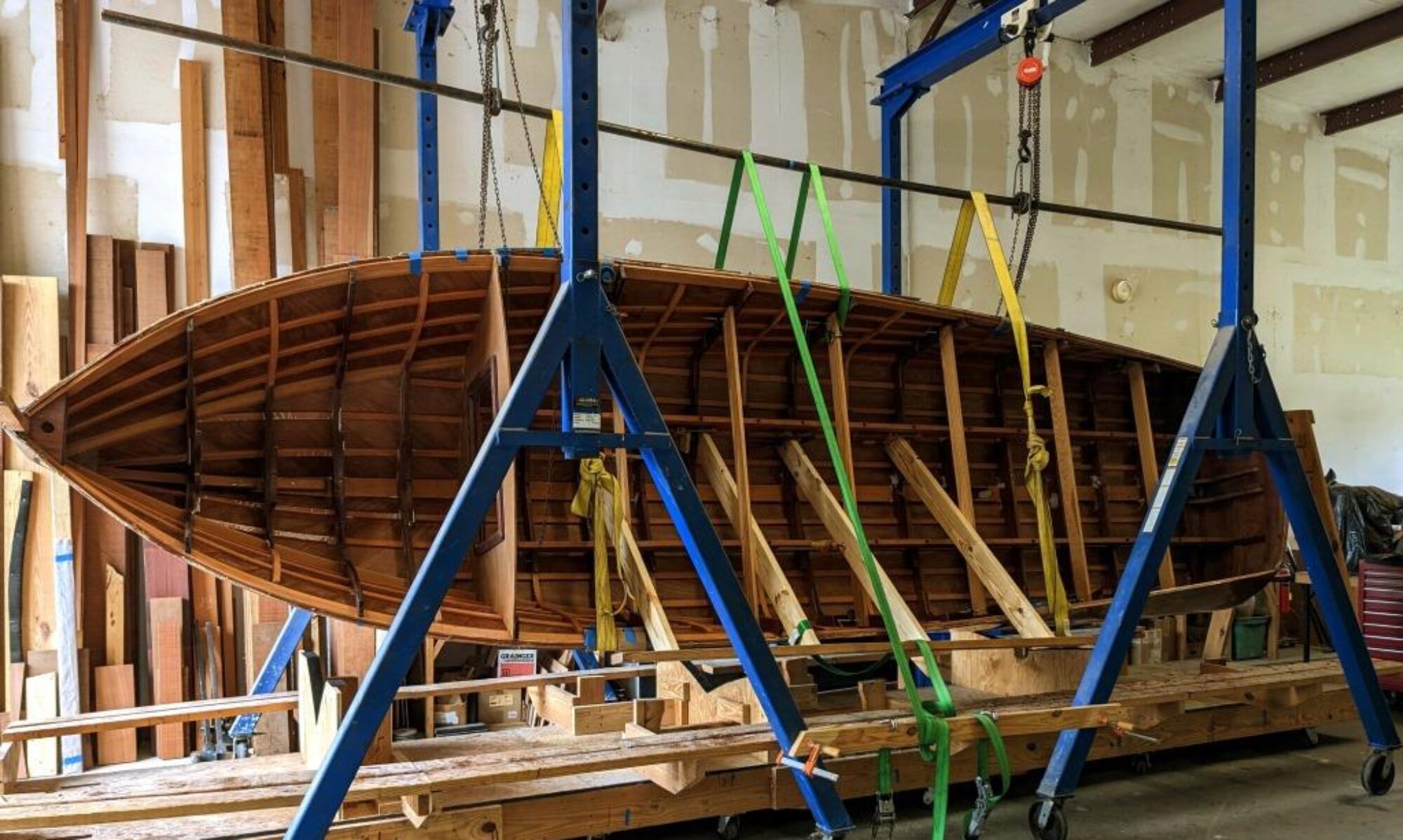
After the new deck pieces were fabricated and trimmed to final size, it was time to focus on removing the old deck. It was a pretty lo-tech process actually. I used a router to turn the old deck into a lot of sawdust, removing the same thickness as I had fabricated the new pieces to.

The next step was to position the new pieces and be sure they wouldn’t move after the glue was applied. Ordinarily I’d use a couple of locator screws per piece, then remove the screws after the glue cures and cover the hole with a bung. But a more elegant solution came to mind. Remember the blue tape I mentioned the the last post? I left one plank unglued in each deck piece. That way, I could use dowels to index the pieces and be sure they wouldn’t shift during the glue up. Then I shaved the dowels and glued in the final planks. No bung holes!

I used a vacuum bag to pull the deck pieces down to the crown of the deck. It was the perfect way to ensure good uniformity of clamping pressure and no voids.

There was a fair bit of sanding to clean up all the glue before sealing the deck with a coat of epoxy before applying clear coat finish. And finally, I sealed around the edges with a 3M product that was UV tolerant.

That’s the long and the short of it.
